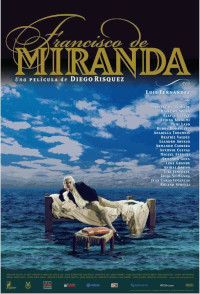| Francisco de Miranda | |
|---|---|
 Film poster | |
| Directed by | Diego Rísquez |
| Starring | Luis Fernández |
Production company | Producciones Guakamaya |
Release date |
|
| Country | Venezuela |
| Language | Spanish |
Francisco de Miranda is a Venezuelan film on the life of Venezuelan independence hero Francisco de Miranda. It was released in Venezuela in August 2006, opening at forty cinemas, and beating Superman Returns at the box office. [1]